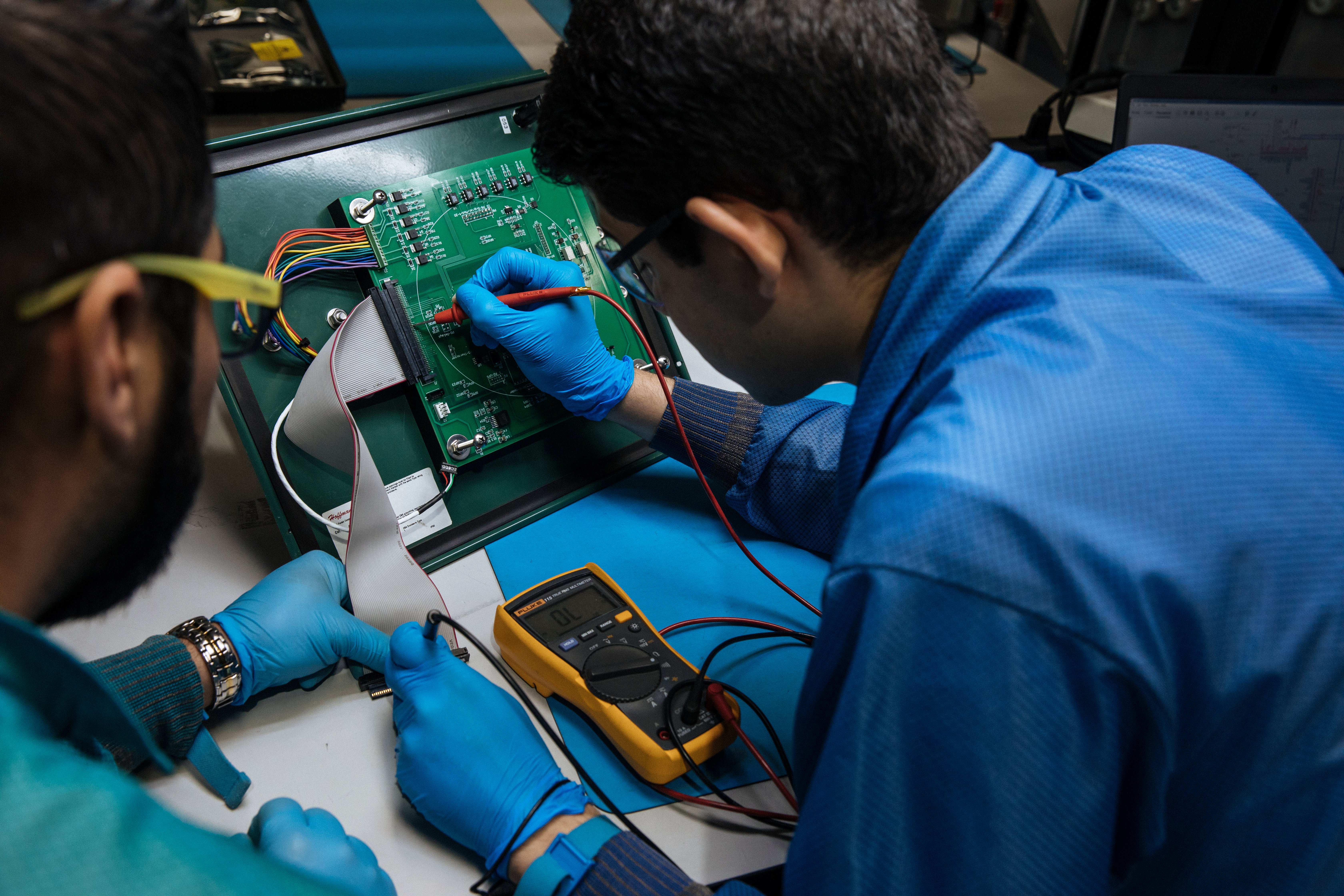Electrical PCBA testing finds anything from process defects to design issues. Process defects are faults that are created during the circuit board assembly process. These can be wrong component values, backward components, missing components, solder shorts / opens, etc. It is a huge task to launch a new product. Bill of Materials need to be loaded, parts need to be procured, and machines need to be programmed. When the PCBA is built for the first time, the process often needs to be tweaked to reduce solder shorts and other defects. There are many opportunities for issues to arise.
The good news is process defects are often easy to correct without having to redesign the board. On the other hand, design issues are faults that often require redesigning the board (i.e. incorrect component footprints, incorrect trace routings, missed components, circuit design problems, etc.). However, some design issues are easy to correct and won't require respinning the PCB (i.e. component value changes). Electrical testing helps identify problems quickly before the entire order is built saving rework and ultimately time and money.

TYPES OF QUICK-TURN PROTOTYPE TESTING
- AOI (Automatic Optical Inspection)
- Utilizes a computer driven camera and software to quickly and accurately inspect the PCBA after it is assembled. This test system is completely automated. The computer can identify different assembly issues (i.e. missing, incorrect, wrong polarity, solder shorts, etc.) and notify the operator of the fault. AOIs are typically placed in-line with the PCBA assembly machines and can identify a problem immediately when the first board is built and before additional PCBAs are made. AOI programs do not take long to develop or modify.
- Utilizes a computer driven camera and software to quickly and accurately inspect the PCBA after it is assembled. This test system is completely automated. The computer can identify different assembly issues (i.e. missing, incorrect, wrong polarity, solder shorts, etc.) and notify the operator of the fault. AOIs are typically placed in-line with the PCBA assembly machines and can identify a problem immediately when the first board is built and before additional PCBAs are made. AOI programs do not take long to develop or modify.
- X-Ray
- Just like the X-Ray in a hospital gives doctors the ability to see the bones and other objects behind skin and tissue, X-Ray testing can be used to inspect the quality of solder joints under components that have obscured solder connections (i.e. BGAs, LGAs, etc.). This helps identify voids in the solder joint, solder shorts, and other solder process issues. The X-Ray does not use film but projects the live image directly to a screen for the operator to see and inspect. The software also has built-in tools to help show 3D density images to aid in the visual analysis of the solder joints. X-Ray is an inspection tool that does not require any test development.
- Just like the X-Ray in a hospital gives doctors the ability to see the bones and other objects behind skin and tissue, X-Ray testing can be used to inspect the quality of solder joints under components that have obscured solder connections (i.e. BGAs, LGAs, etc.). This helps identify voids in the solder joint, solder shorts, and other solder process issues. The X-Ray does not use film but projects the live image directly to a screen for the operator to see and inspect. The software also has built-in tools to help show 3D density images to aid in the visual analysis of the solder joints. X-Ray is an inspection tool that does not require any test development.
- Flying Probe
- Flying Probe is an essential part of any prototype build. Flying probe uses multiple electrical test probes that can move in any axis to test components on a PCBA very similar to what a person would manually do. The flying probe imports CAD data files (i.e. ODB++) to extract the locations, net names, designator information, and component values. Tests can then be created to measure across and verify each component on the PCBA. Flying probes can only test the components they have access to. If a solder joint is obscured, vias are tinted with masking, or test point pads are not available, the part won't be tested. Also, as with all in-circuit testing, it is sometimes difficult to measure the true values of components. The flying probe does its best using "guarding" to isolate and control the current flow in a circuit so a component can be more accurately measured.
- Flying probes can be slower than other test methodologies and are best suited for low volume prototype builds. However, flying probes beat other test methodologies in quick-turn situations due to their lack of hardware development overhead that bed-of-nails and other test systems have. It is easy to change a flying probe test if the PCB layout changes to add or remove tests. This is sometimes difficult with other test methods. Flying probes can also probe solder joints which is not recommended for bed-of-nails fixtures. For this reason, flying probe is the best solution for Quick-Turn Prototype testing.
- Functional
- Although rarely used, a small power-up functional test is sometimes all that is necessary to check the power supplies and operational current on a prototype. A cable can be supplied or made to provide the required power to the PCBA and all the voltage rails tested. Sometimes not all the supplies can be checked until the PCBA is programmed, but a majority of the power rails may be able to be checked using this method. A functional test will sometimes not detect wrong component values and a simple "power supply" functional test will not guarantee every circuit is operational, however, it will give a higher level of confidence that the PCBA does not have any major defects.
WHAT TYPES OF TESTING ARE MOST IMPORTANT FOR DIFFERENT PCBAS?
Low Density PCBAs with test points and untinted vias
Flying probe would be the best option for quick-turn testing this type of PCBA. The test points, untinted vias, and component leads are all good test points the flying probe can access. This allows the flying probe to individually test each component on the PCBA and offers the highest test coverage. Even if the PCBA contains some leadless packages (BGAs, LGAs, etc.), the flying probe can still check for shorts between the nets that are connected to the leadless package and test other components as well.
High / Low Density PCBAs without test points or untinted vias
In this situation, flying probe may still be used, but test coverage will suffer. The component solder joints would be used for component testing instead. These types of circuit board assemblies may also benefit from a small power-up functional test to help determine if there are any major issues in the circuits that could not be tested by the flying probe.
Of course, flying probe should be supplemented by AOI and X-Ray inspection to produce a high degree of confidence the PCBA was built correctly and is functional. Functional testing is always optional if the test coverage is adequate. Another thing to mention in prototypes is design for test. We often see a product come through that the customer wants tested, but because of the lack of test points and non-tinted vias, test is not possible.
KEY TAKEAWAYS
- Identify problems early on. Proto builds can be full of surprises. Testing helps identify problems and allows changes to be made to the process and design before additional PCBAs are built.
- Saves time (and money). Testing helps identify problems early on in the build process and allows issues to be corrected quickly before they reach the end user and need to be returned for rework.
- Improved quality. Testing provides an extra layer of confidence that the PCBA will work when the end user receives it.





.jpg?width=176&height=56&name=MR_associatedNetwork_logo%20(1).jpg)